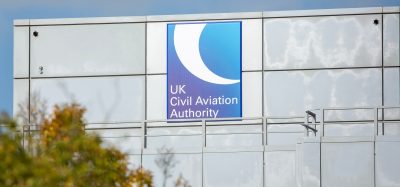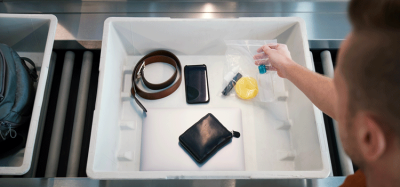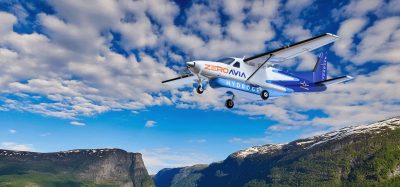ICAO – Regulators – Friction issues
Posted: 16 July 2009 | Armann Norheim, Advisor for Avinor & Leader, ICAO Friction Task Force | No comments yet
Reporting the conditions of the critical tyre/surface in a way relevant to aircraft performance has been a long sought goal. There have been a lot of challenges for the aviation industry since the first reporting systems emerged and the regulating bodies have their role to play in achieving the goal for a global reporting system. Key players in such a reporting system are the airport ground staff collecting the information and making the assessment and the pilots making judgements based on the information given. The main regulating bodies (ICAO, FAA, and EASA) have several initiatives ongoing addressing these topics.
Reporting the conditions of the critical tyre/surface in a way relevant to aircraft performance has been a long sought goal. There have been a lot of challenges for the aviation industry since the first reporting systems emerged and the regulating bodies have their role to play in achieving the goal for a global reporting system. Key players in such a reporting system are the airport ground staff collecting the information and making the assessment and the pilots making judgements based on the information given. The main regulating bodies (ICAO, FAA, and EASA) have several initiatives ongoing addressing these topics.
The first reporting systems
In an old Norwegian document (1949) we find that braking action would be reported as in UK, using the terms Good – Bad – Indifferent when reporting runway surface conditions relevant to aircraft performance. This is an early representant for the ICAO NOTAM system, where braking action is referred to in terms of Good, Medium and Poor.
Norway developed a method in 1949/50 which related the performance of a DC/4 to a winter contaminated runway surface. This method, later referred to as the Full Stop Method, was further refined and appeared in the ICAO circular Snow and ice on runways in 1955. The method made use of a truck which was brought to a full stop and the retardation measured based upon time and distance measurements. A rule of thumb developed from this; the aircraft experienced half of the measured braking action experienced by the truck.
Join us live: Shaping the Next Generation of Hold Baggage and Air Cargo Screening
Join us live for an insightful webinar on 11th December at 14:00 GMT, in collaboration with Smiths Detection, as we explore the strategic balance of operational efficiency, regulatory compliance, and sustainability in high-volume security environments.
This session offers a focused look into future-proofing your security strategy.
Key learning points
- Cost Reduction: Strategies to minimize bag travel time while simultaneously reducing operational costs.
- Regulatory Roadmap: Insights into the next wave of regulatory changes and their impact on future investment decisions.
- Sustainable Systems: Practical approaches to building sustainability into security systems and lowering the total cost of ownership (TCO).
- Scalable Solutions: Real-world examples of scalable systems supporting current airport growth and preparing for tomorrow.
Register now for expert insights, case studies, and actionable strategies on operational efficiency!
Based upon experience from Finland, Norway, Denmark and Sweden throughout the 50’s, a table (Table 1) was developed at an Inter Nordic meeting in Stockholm October 1959.
This table, through IATA proposals from 1963, found its way into ICAO documentation as an integrated part of the ICAO SNOWTAM format in 1968. By this action ICAO supported two different systems for reporting, the original NOTAM system and the special SNOWTAM system. Both the NOTAM system and the SNOWTAM system have developed differently among States, resulting in the confused situation we find ourselves in today.
Different measuring principles
Towards the end of the 50’s another measuring principle was introduced for the aviation industry. A tyre is forced to rotate at a lower speed than a free rolling one. The generated force was measured and a relation to aircraft performance was sought. From the report of the seventh session of the ICAO Aerodromes, Air Routes and Ground Aids Division meeting in 1962:
“One State reported that a vehicle had been developed which provided the incipitent skidding friction coefficient in a graphical form with an accuracy of 0.01 and required a short runway occupancy time.”
However, one experienced that the different measuring principles gave different results when measuring the same surface conditions. The need for correlation and harmonisation arose. With the best intention, new friction measuring devices of different makes were introduced to the market by the States. In 1974 ICAO published the final report from a research programme, whose objective was:
“To define the degree of correlation that exists between various types of equipment used in the measuring of runway braking action.”
From the conclusions:
‘‘In the evaluation of the reduced test data the following was noted:
- Some degree of correlation exists among devices tested
- Correlation varies widely between equipment pairs and with changes in surface textures
- A lack of precision is evident among measuring devices tested. Even greater lack of precision is evident at the lower test speeds (under 40 mph) and on the lower friction surfaces
- The inverse DBV SDR (1/SDR) can be included in the comparison tables and in the correlation classification.
Examples from correlation charts:
Wet surface:
DBV (Diagonal Braked Vehicle) reading of 0.50 ±0.15 are equivalent to:
- LPC 0.43 + 0.20
- Mu-meter 0.45 + 0.20
- Skiddometer 0.62 + 0.20
- Stradographe 0.45 + 0.15
Compacted snow or ice surface
DBV reading of 0.30 ± 0.05 are equivalent to:
- JBD 8.5 + 4
- Skiddometer 0.29 + 0.10
- Mu-meter 0.27 + 0.10
- Tapley meter 0.26 + 0.15
One can easily see that the accuracy reported in 1962 of 0.01 was not achieved. Since then, various research projects have been launched worldwide, but mostly in Europe and the USA. New measuring devices have been introduced to the market and the aircraft was brought into the loop. In a 1980 report from the Aeronautical Research Institute of Sweden, the conclusion was:
“If reporting of brake numbers to pilots is of importance, it is necessary to continue the development of both measuring vehicles and applying processes.”
As part of the Canadian initiative, the Joint Winter Runway Friction Measuring Program, (JWRFMP) and Canadian Runway Friction Index, CRFI was developed. It is in operational use in Canada. This method makes use of decelerometers and are in principle comparable to the method developed in Norway in 1950. More than 50 years of research can be visualised as shown in Figure 1.
From this, one can deduct that there has not been any real operational change in our practical use of the information from 1950 to present, when the measuring principle of deceleration is used. The difference being that the deceleration data that is being used in Canada to predict landing distances for aircraft on contaminated runways has been validated with actual tests conducted through the JWRFMP.
As a result of the JWRFMP an International Runway Friction Index (IRFI) was developed. The IRFI typically reduces the present variations among different measuring devices from 0.2 to 0.05 friction units by using an ASTM standard. Industry is still struggling with the procedures and the needed infrastructure. The total uncertainty involved, including repeatability and reproducibility for individual friction measuring devices, must be controlled. The will to develop methods and logistics for using these devices on a global scale is still not there.
Ongoing initiatives from main regulators
There has been a more or less constant focus on the subject through half a century. New tools have been introduced, one of them being the Safety Management System (SMS). Within the constraint of an SMS system and the search for a global reporting format, new approaches and possibilities arise.
ICAO established a Friction Task Force (FTF), FAA launced a Takeoff And Landing Perfomance Assessment – Aviation Rulemaking Committee (TALPA-ARC) and EASA launched a project related to runway friction characteristics measurement and aircraft braking.
The ICAO FTF initiative is threefold:
- Review and recommend changes to ICAO Annexes and guidance material
- Develop an ICAO Circular on friction issues
- An action plan for further activities
FAA’s focus is on a reporting format and EASA, being new in regulating airports, is contributing through their initiative.
Outlining the future
From the ongoing activities outlined above, some future structure emerges and might outline a future system related to friction issues and aircraft performance. Key elements in this are:
- Split operations and maintenance – A clear and distinct split between the operational side on winter contaminated surfaces and the maintenance of the movement area surfaces. ICAO established the split in 1981, but there is still confusion within the aviation industry on the subject. As a matter of fact, there is an established relationship between aircraft performance and some winter contaminated surfaces, but not for wet surfaces
- Assessment – Focus on training the airport ground staff and their ability to estimate the nature of and judge the importance of the various contaminants relevant to aircraft performance
- Judgement – Focus on training the pilots and their ability to make critical distinction and achieve a balanced viewpoint out of information available to them.
Operational
Central to the operational part will be the reporting system. This is a top priority highlighted by the FAA TALPA-ARC initiative. Key elements here are performance levels based upon assessment with input from contaminant types, depths and surface temperatures. These levels can be downgraded based upon friction measurements or pilot reports. This implies that the measured friction numbers will no longer be reported. However, friction measuring devices can be used for downgrading an assessment.
The discussion relating to measuring devices and their ability to distinguish between performance levels is a different one. From a pilot organisation perspective (IFALPA), support for five friction level subdivisions for downgrade, based on friction tester or PIREP, is not given unless warranted by correlation, accuracy, etc. The state of the art and the uncertainty involved does not warrant this today.
How many reporting levels are used depends on the aircraft performance data available to discriminate between performance levels. Airport ground staff must be able to identify these levels by input from type and depth of contaminants and surface type and temperature (e.g. prevailing weather conditions). ESDU has outlined a model of eight independent variables where three of them relate to the runway and its condition:
- Depth of macro-texture of runway surface
- Depth of contaminant
- Density of contaminant
Others are focusing on developing tools to help the ground staff in their assessment, taking into account the prevailing weather conditions. Most likely, these discussions and research on these topics will dominate the future.
Maintenance
Central to the maintenance part is the identification of:
- “Slippery when wet”-surface
- Normal operating surface
- Surface with wet performance credit.
The first one does not represent an identified aircraft performance level. At present the TALPA-ARC initiative is trying to bridge this. The two other ones represent two friction level classifications related to aircraft performance, these levels are identified through harmionized FAR and CS certification regulation.
There is, however, confusion caused by the terminology involved. There is a need to come up with terminology acceptable to everyone, that can provide an opening for different surfaces that could take credit for the performance benefit. The performance levels were created by using an ESDU classification of surfaces, based upon surface texture, with a scale running from A to E (see Table 2), where E represents the roughest texture measured as Mean Texture Depth (MTD). Normal operating data represent a texture midway between B and C surfaces and a wet performance credit surface represent a surface with texture midway between D and E surfaces. This is the same as the ICAO recommendation for a new surface, not less than 1.0 mm.
In the operational documentation, terms like grooved, porous friction course, skid resistant etc are used to describe and discriminate between the two performance levels.
To make use of the wet performance credit, a system must be established. FAA has outlined one in their guiding material, but presently there is no global system. Key elements in a global system would relate to the regulator, the aircraft manufacturer, the aircraft operator and the airport operator, in such a way that data is provided in the Airplane Flight Manual, and that the operator has determined that the runway is designed, constructed and maintained in a manner acceptable to the authority.
When designing and during construction, good qualities could be built in by using crushed aggregate of good quality that will withstand polishing. Maintenance between surface overlays will then mainly be a question of controlling the rubber build up, to secure the frictional properties of the pavements.
ICAO FTF – July 2009 meeting
The ICAO FTF will, together with other key players, have the subjects outlined above and other subjects on the agenda at an upcoming meeting in July 2009. The outcome will be recommendations to ICAO.






The International Airport Summit is open for registration!
Date: 19 – 20 November 2025
Location: JW Marriott Hotel Berlin
At our flagship event of the year, we will dive into the future of airport operations, with expert-led sessions on passenger experience, innovative smart technologies, baggage handling, airside operations, data, security, and sustainability.
This is where global airport leaders come together to share insights, challenges, and real-world solutions.
Limited complimentary passes are available for eligible professionals – first come, first served!

















